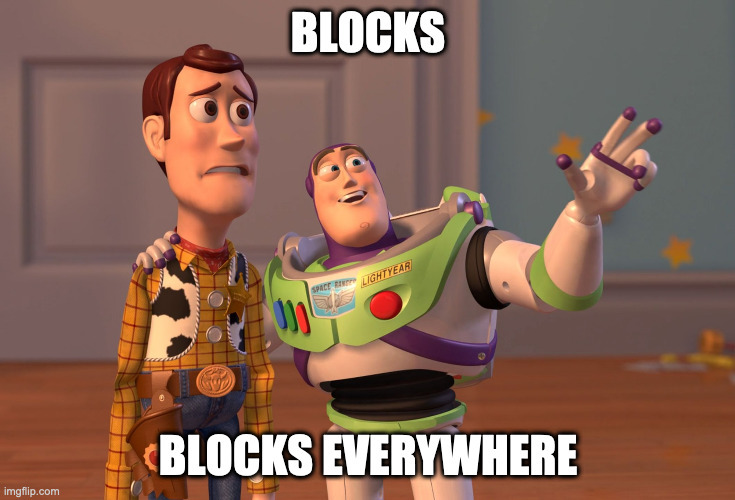The impact of WordPress 5.8

The July 20th release of WordPress – named after Art Tatum – brings many new features, and continues the significant evolution of this content management system. In the 18 years since WordPress was released, we have moved from being able to only edit a small amount of page content, to sophisticated layouts with Block Editor (AKA Gutenberg), and are now charting a path towards Full Site Editing, where everything will be editable.
This potentially hands huge power to users to change a website layout. But is it ready for business clients?
What’s new?
There’s no need to go into all the changes in 5.8 – Kinsta has an excellent article detailing this, including a particular focus on the UI changes to the block editor. If you want to get really technical, then the 5.8 Field Guide is also available.
The changes we want to focus on are those that will have an impact on areas important to our clients:
- Performance
- Compatibility
- Layout
Performance
In general, website speed really comes down to one thing, send the least amount of data to convey your message. In WP 5.8 two changes will impact this:
1) WebP
You already know JPG – it’s a standard image format. WebP is a newer image format developed by Google, which offers better image compression. WordPress will now natively support WebP uploads to the media library and display these on the front end of the website, which means we can speed up pages without reducing image quality.
Should you be using WebP then? Well, it’s tricky, fewer image editors support saving as WebP, so content editors are unlikely to have them to hand (without using a converter). As developers, we could now force WordPress to convert to WebP from JPG (saving content editors the work), but the elephant in the room is browser support.
JPG has almost universal browser and operating system support. WebP is getting there, but it doesn’t work on Safari, older Macs or Internet Explorer 11. So depending on your website visitor base, you may want to start using WebP, but we wouldn’t recommend it at the moment as it could leave some users with blank spaces where your images should be.
There are alternatives if you want to benefit from WebP: 10 Degrees has previously used Cloudflare Workers or Cloudflare Polish to serve WebP images to supported browsers – by converting from JPG on the fly. We could also do the reverse using Cloudflare Workers, and serving JPGs as a fallback. This would provide an optimised experience for modern browsers, whilst ensuring visual continuity for older browsers.
WebP usage is an option in WordPress 5.8.
2) Block styles
When we build a website, all the CSS is bundled together to create a single file. This reduces the number of files to be downloaded by the user’s web browser, and after it has been downloaded once, that CSS file will be re-used on subsequent pages visited.
But there are also now benefits to not bundling CSS files, since we can take advantage of parallel connections and send many files at the same time. Block styles will work in tandem with this by giving us the ability to break up that large, monolithic CSS file into many smaller files – which will only be loaded when the associated block is present on the page. This will benefit page speed by sending less data to the user.
We do need to be careful how these files are delivered though – currently block style files are loaded in the footer, so if the CSS for a given block has a significant impact on the presentation, this could lead to display issues and affect search indexing.
Block styles loading is an opt-in change in WordPress 5.8.
As part of our support and maintenance service, 10 Degrees work with our clients on the performance of their websites and this will become another facet of that service.
Compatibility
Adieu Internet Explorer 11. The browser was released in 2013, and is currently used by less than 1% of all users on the Internet, with usage rapidly declining. Microsoft has announced that it reaches its end of life in June 2022. In advance of this, WordPress is dropping support for the browser.
What does this mean for your website?
For the front end of your website, not much. If your website supports IE11 visitors, it will continue to do so for the foreseeable future.
For the back end of your website, the WordPress dashboard there’s more of an impact. New features are no longer going to be tested on IE11, and are not guaranteed to work at all – this is especially relevant to Block Editor which relies on modern JavaScript that IE11 does not support. Administering your website will start to get difficult if you’re using IE11.
The WooCommerce caveat
In addition to WordPress 5.8 dropping IE11 support, WooCommerce 5.5.0 will begin to do so as well. By WooCommerce 5.6 (scheduled for August 8th), IE11 support will be fully dropped. On their blog WooCommerce state, “This decision impacts the merchant’s admin area as well as the customer facing side of a store”. So you could find customers unable to view or purchase items.
What should website owners do?
If you have a high number of IE11 users, encourage them to move to a new browser by conditionally displaying a banner pointing to BrowseHappy. If your users cannot move from IE11, such as in an institutional setting, then you’ll have to check after every WordPress upgrade that the website is still usable and can be administered effectively. If you’re not using Block Editor, it’s probable that your website will remain fine for a while, but you should start planning to upgrade your website now.
10 Degrees no longer supports IE11 for new projects, unless by special request.
Layout
With WordPress’ still relatively-new Block Editor to manage content, we have been thinking about how to best provide templated content options. Clients usually want a mixture of freeform ‘put anything on a page’, and a number of specific layouts where ‘content should be predefined, with (possibly) some editable options’.
In the past this meant working within the Template Hierarchy to provide customised layouts depending on the content that should be shown, e.g. for a Single post of a given Custom Post Type, allow a specified layout. That content was usually controlled via Advanced Custom Fields, but now we use Block Editor to achieve the same effect – and achieve more consistency with the display on the front end. Regardless, these were implemented by developers using PHP to control and output content, and meant visual accuracy to agreed designs.
Enter the Template Editor

With the 5.8 release, WordPress introduces the Template Editor. Editors may now use any blocks available on the website to create a layout, which can be applied to any post or page. This overrides templates as defined in PHP, and is incredibly powerful. It means users can change and save layouts for different requirements, without recourse to developers.
This will be extremely useful, especially for landing pages. Users can change the entire content of a page, the site logo, the header, the navigation menu and the footer.
In a sense, this is the essence of the mission of WordPress, which has always been to democratise publishing on the web. We support building tools for maximum inclusivity, and this change adheres to that, as it puts real power in the hands of users to create the websites they want.
So what’s the catch?
For smaller businesses, we think there will be a learning curve but ultimately the Template Editor and Full Site Editing will be beneficial. For medium and larger businesses, Template Editor should be more of a concern.
Content editors tend to deal with content that is bound – by the header and footer, and width constraints – which wrap around the editable page content. Content is bound by technical implementation and by the design. Editors can now override all custom layouts that have been carefully designed, agreed and implemented. There is currently no way to limit the areas or parts of the template that can be overridden.
If the original developers or development resource is not available, this could be very useful. But this could also result in layouts that do not meet brand guidelines, or even harm search indexing by providing a slow page experience. Content editors should not have to be designers and developers as well.
In testing, we have noticed mixed results when using the new template editor to change layout, especially on themes that were developed some time ago. Backwards compatibility will be an issue for some websites.
We are also concerned about confusion for content editors. WordPress is struggling a little to define what templatable content is, and how it is edited. Traditional templates are well known. These can now be overridden by using Template Editor. Additionally, WordPress offers Block Patterns, “…a collection of predefined blocks that you can insert into posts and pages and then customize with your own content.” It offers Reusable Blocks, which can include multiple blocks to form a pattern or layout, if you will. It’s unclear when should you use a pattern or new layout or just re-use a block.
This is not a “WordPress 5.8 is coming to destroy your website” scare tactic, but as ever with new features, we advise an approach that’s pragmatic and careful, in-line with the needs of each business.
Template Editor is an opt-in change in WordPress 5.8.
At 10 Degrees we won’t be enabling Template Editor until we can provide a useful editing experience with templateable content.